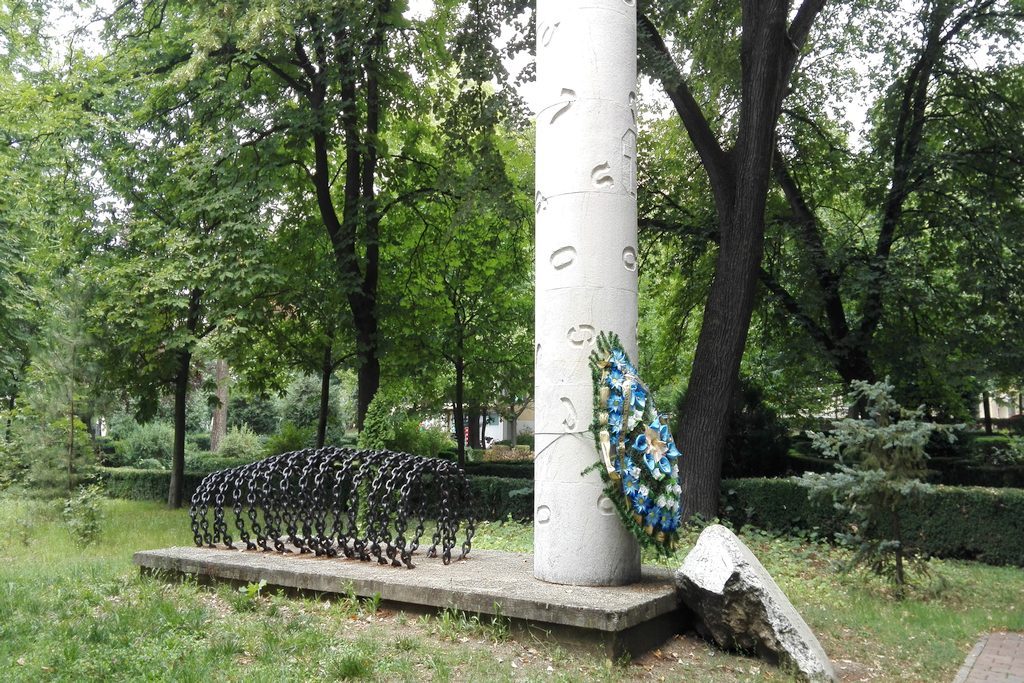

The monument is built up in the memory of the victims of the communism, of the deported and of the displaced in the plain of Bărăgan, to the heroes who died in the period 1944 – 1989. The monument was built up by the Association of the Former Political Prisoners from Romania, the head office of Mehedinți.
Annually, on the 9th of March, crowns of flowers are placed at the monument from the Dragalina Park.
According to the statistics of the Institute of Investigating the Crimes of the Communism and of the Memory of the Romanian Exile, during the communist regime there were 44 principal penitentiaries and 72 forced work camps destined for the political prisoners, in which there suffered over 3 million Romanians, among which 800.000 are dead. In the Bărăgan Plain, 4000 political prisoners sacrificed their lived in prisons, cages and forced work camps for victory, justice, dignity and freedom.
From Mehedinți there were lifted by force and displaced in Bărăgan 1.243 families with 3.851 persons from 100 localities. By fixing these families for an undetermined period then, in the south – west of the Bărăgan, in the empty field, there were founded 18 new localities. The operation started with the clearance of the corn, barley, maize and rape seed. In two, three years these establishments in the field became villages with city halls, militia posts, schools and churches. With the faces covered by sadness, the former deported are still living, they gave with much effort testimonies about the sufferings endured.
The deportations in Bărăgan were an ampleness action of “dislocation” undertaken in the years 1950 by the communist regime from Romania, with the purpose of forcedly relocating in the Plain of the Bărăgan the population who lived on a radius of approximately 25 km from the border with Yugoslavia, from the counties Timiș, Caraș – Severin and Mehedinți, following the conflict which burst up between Staliniși, the communist leader from Belgrade, Iosif Broz Tito. The space of 25 km throughout the Yugoslavian frontier was extended between the villages Beba Veche (the county of Timiș) and Gruia (the county Mehedinți), covering a number of 203 localities. There were also deported people from the island Ada Kaleh. In 1956, the deported returned to their natal places, but they didn’t recover their homes.
In the night of the 17th – the 18th of June 1951, the night of the Pentecosts, it was put into force the most conservative deportation action in the contemporary history of Romania, after the deportation of the Germans from Romania in the Soviet Union, undertaken in January 1945. A number of 12791 families, namely 40320 people, from 258 localities situated in the proximity of the frontier with Yugoslavia, in the current counties Timiș, Caraș – Severin and Mehedinți, were lifted up from their hostels and deported in Bărăgan. There were taken Romanians, Germans, Serbians, Bulgarians, and refugees from Basarabia and the North of Bucovina, Macedo – Romanians.
